Article by: Louise Jett, ljett@lc.edu
ALTON – The National Great Rivers Research and Education Center (NGRREC℠) has recruited eight scientists to serve as Faculty Fellows. These leading scientists will serve as support staff for NGRREC℠.
The chosen scientists are helping to set the stage for ongoing learning, discovery and engagement at NGRREC℠, which is an innovative center for research, education and outreach located near the confluence of the Mississippi, Missouri and Illinois rivers in East Alton, Illinois.
"By including a cohort of Faculty Fellows, we are expanding our research opportunities," NGRREC℠ Senior Scientist Richard Warner said. "These scientists will set the stage for ongoing learning, discovery and engagement activities that will enable collaborations with dozens of Illinois faculty and scientists elsewhere. We are excited to learn the outcomes of their research projects."
The following University of Illinois faculty members are currently serving as Faculty Fellows for the 2012-2013 academic school year: Nicholas Borzović, Ximing Cai, Bethany Cutts, Marcelo Garcia, Prasanta Kalita and Bruce L. Rhoads.
George Czapar, head of the Center for Watershed Science at the Illinois State Water Survey, and Drew Phillips, of the Illinois State Geological Survey, are also currently serving as Faculty Fellows.
 Nicholas Borzović
Nicholas Borzović
Borzović is an assistant professor of agriculture and consumer economics. As an NGRREC℠ Faculty Fellow, he is developing a roadmap for how a research and educational mitigation bank would be developed at NGRREC℠.
“Ecosystem services are an increasingly important organizing concept in environmental management,” Borzović said. “However, there is a disconnect between research and education surrounding ecosystem services in higher education and the real-world ecosystem services industry.”
Borzović cites the fact that much academic research has focused on water quality trading, but very few actual trades have occurred as one example of the disconnect. “Conversely, wetland mitigation is a multibillion dollar industry in the U.S. but has only been described in a handful of academic papers,” Borzović said.
Eventually, Borzović will begin discussions with the appropriate academic, industrial and governmental partners for the development of the mitigation bank.
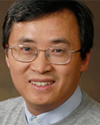 Ximing Cai
Ximing Cai
Cai is an associate professor of civil and environmental engineering. As an NGRREC℠ Faculty Fellow, he is studying the ecosystem degradation problems in big rivers resulting from overwhelming headwater drainage practices. The Illinois River is serving as his case study site.
“The target is to start a major research project based on the resources of NGRREC℠, which together with other existing or future projects, is expected to enhance the role of Illinois in the big river research area,” Cai said.
Cai also wants to connect his ongoing research and teaching to relevant activities of NGRREC℠. He has been studying large-scale river basin management using integrated hydrologic-economic approaches.
“I expect to work with other fellows as a group to promote NGRREC’s influences in research and education,” Cai said. “Working in a group, we can start with brainstorming ideas and move to strategy development, and start with research and education exchanges and move to collaboration on projects.”
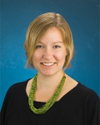 Bethany Cutts
Bethany Cutts
Cutts is an assistant professor of natural resources and environmental sciences. Her long-term goal is to develop an integrated program of research and education designed to address key questions relevant to sustainability concerns in the Upper Mississippi River Basin.
Cutts is interested in using the NGRREC℠ Faculty Fellows Program as an opportunity to advance one research objective and one educational objective.
The research objective is to define the contribution of network tie strength and configuration on the ability of alternative policies to support multiple social and environmental relationships within the framework of the Illinois River.
“Over the course of my career, I will design research specifically to compare networks generated through policy and research findings related to the prevention of further invasion of the Illinois River by Asian Carp, reduction of nutrient pollution of the river from agricultural and urban sources and accommodation of both the benefits and burdens created by changes in the flood regime,” Cutts said.
Her educational objective is to develop training networks that can be used to connect community college, undergraduate and graduate students with scientists and policy makers.
“Outcomes of education and employment research often cite the critical importance of a second type of network: those connecting job seekers to potential sources of employment,” Cutts said. “In this respect, ‘weak ties,’ or the friends of friends, can serve as influential sources of new information about career opportunities. I propose, through this project, to promote such weak ties by integrating student activities with my ongoing research. Students will be trained to conduct interviews with scientists and policy makers, expanding their personal network of weak ties in environmental careers.”
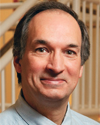 George Czapar
George Czapar
Czapar is the head of the Center for Watershed Science at the Illinois State Water Survey. As a Faculty Fellow, he plans to focus in the areas of public engagement, expanding international research partnerships and working with interdisciplinary teams.
“NGRREC℠ is an ideal setting to help develop collaborative projects and explore novel approaches for improving water quality,” Czapar said.
Czapar is working on developing a project that connects community colleges along the Illinois River. He feels the Illinois River can be used to engage students in water quality monitoring and help them understand how land management practices affect water resources.
His second objective is to expand international research and teaching opportunities with NGRREC.
“I currently have ongoing projects with the University of Leeds in the UK and Zhejiang University in China,” Czapar said. “Both of these top universities have active programs in water research and work on related issues such as nutrient enrichment, flooding, water supply planning, and climate uncertainty. In addition, scientists from both these universities visited NGRREC in 2012 and are very interested in pursuing collaborative projects.”
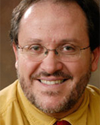 Marcelo Garcia
Marcelo Garcia
Garcia is a professor of civil and environmental engineering. As a Faculty Fellow, Garcia is taking advantage of the mesocosm flumes at NGRREC℠ to conduct experiments on the transport of Asian Carp eggs and flows in the vegetated channels.
Garcia is also assessing the hydropower potential of Illinois streams, specifically the Illinois and Fox Rivers where many low-head dams could be retrofitted to generate energy with minimum environmental impact.
“I am also interested in pursuing the development of a facility at NGRREC℠ for the testing of hydro turbine technology taking advantage of the dam that is upstream,” Garcia said.
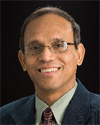 Prasanta Kalita
Prasanta Kalita
Kalita is a professor of agricultural and biological engineering. The primary focus of his teaching and research career has been in the area of land and water resources management for sustainability.
“Ever increasing demand on water to meet the world’s food production, urbanization, industrialization and other sectors is impacting our available water resources, water quality and environmental sustainability,” Kalita said. “Sources of water supplies in many parts of the world have declined, and, yet, the drainage of excess water from a significant land resource has been a constant need.”
As a Faculty Fellow, Kalita is collaborating with Lewis and Clark Community College by developing partnerships for education and research collaboration. He plans on providing seminars and visiting lectures to classes related to water and the environment.
He is also providing leadership in establishing and coordinating programs between NGRREC℠ and funding sources while working on grant development.
 Drew Phillips
Drew Phillips
Phillips is an Associate Quaternary Geologist for the Illinois State Geological Survey (ISGS). With colleagues at ISGS, he has completed surficial mapping of the St. Louis Metropolitan region of southwestern Illinois, including the American bottoms of the Mississippi-Missouri River valleys.
“Recent developments in historic and modern aerial photography, and high resolution elevation data have made possible remote sensing analysis of landscapes over large areas,” Phillips said.
As a Faculty Fellow, Phillips is continuing his current research, which is geographically focused in the Wabash and Kaskaskia River Valleys. Research areas that he would like to address pertain to historic geologic activity associated with the retreat of glaciers from the region, and specifically how glaciers shaped the recent geologic history of the Wabash River Valley. Other interests include the mechanisms of large river meanders and earthquakes in the region.
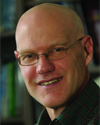 Bruce L. Rhoads
Bruce L. Rhoads
Rhoads is a professor of geography and geographic information science. As a Faculty Fellow, he is interested in advancing both the research and educational missions of NGRREC℠.
Rhoads is exploring funding opportunities and various programs that are being considered for proposal development. He also hopes to better integrate the extensive research program he developed on the Wabash River with the activities and goals of NGRREC℠.
“Our research on the Wabash has been supported by four National Science Foundation grants over the last six years, and we are beginning to expand this work to include a focus on the relationships between river geomorphology and ecological conditions, especially on the fish,” Rhoads said. “Tremendous opportunity exists to connect this work to the riparian expertise of scientists at NGRREC℠. Connecting our work on the Wabash to NGRREC℠ will also expand the scope of NGRREC℠ to a regional scale by moving it beyond its current focus on the Illinois, Mississippi and Missouri Rivers.”
Rhoads also wants to contribute to the growth and development of educational programs between NGRREC℠ and community colleges.
“I see partnerships with other community colleges as a valuable source of potential undergraduates and, eventually, graduate students for programs in Illinois related to water science,” Rhoads said.